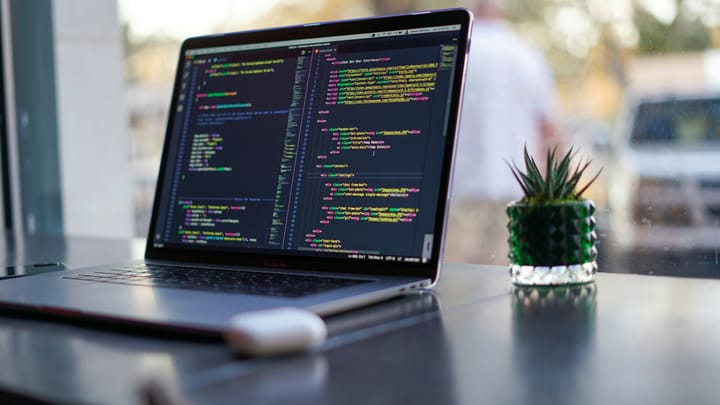5 Top trends in AI 2024

Introduction
By 2024, the initial cultural fascination with early generative AI is translating into concrete business outcomes. This technology, capable of processing and creating text, voice, and video content, is transforming how companies boost productivity, encourage innovation, and spark creativity.
McKinsey & Company estimates that these AI applications could contribute between USD 2.6 trillion and USD4.4 trillion annually to the global economy across different business scenarios.
In the following article, we're excited to share well-informed predictions in Artificial Intelligence for 2024.
Multimodal AI
What is Multimodal AI
Multimodal AI is artificial intelligence that combines different kinds of information to solve real-world situations better and make more accurate decisions and predictions.
Unlike normal AI, multimodal AI uses various data types simultaneously to improve its understanding of content and context.
Difference between Multimodal and traditional AI
At its core, multimodal AI follows the familiar AI approach founded on AI models and machine learning. AI models are the rules that define how the data is interpreted and how responses are generated and formulated.
The ChatGPT application, for example, is currently built on the GPT-4 model. As new data is ingested, the AI determines and generates responses for the user. That output—along with the user's approval or other rewards—is looped back into the model to help it continue to refine and improve.
The critical difference between multimodal AI and traditional AI is their data type. Traditional AI usually focuses on a kind of data. Let's take an example of AI in finance and how it uses business financial data, along with broader economic and industrial sector data, to perform analyses, make financial projections, or spot potential financial problems for the business. That is, single-modal AI executes a specific task.
In contrast, multimodal AI works with various data types, such as video, images, speech, sound, and text. This allows it to understand better and respond to a wide range of situations, making it more like how humans perceive things.
Why is Multimodal AI becoming popular?
Multimodal AI is becoming more prevalent in real-world applications because it offers several advantages over standard AI approaches. Multimodal AI can process and understand information from multiple sources, making it more powerful and versatile than traditional AI approaches, which are typically limited to processing a single data type. Additionally, multimodal AI can provide a more natural and intuitive way for humans to interact with computers, such as understanding and responding to text and voice commands.
Also, because humans inherently perceive the world through multiple modalities, and as AI becomes more advanced, we only naturally expect such models to process data across different modalities to provide us with better insights and responses.
Open Source AI
A significant surge in activity and adoption describes the current state of open-source AI, and generative AI, in particular, has experienced explosive growth in 2023.
More developers are experimenting with generative AI projects, and the number of productive AI projects on GitHub has notably increased.
Individual developers and companies are contributing to open-source AI projects, and the number of individual contributors to generative AI projects has substantially increased.
The overall trend indicates that open-source AI innovation is diverse and that there is a growing interest in AI models and applications within the open-source community.
Why is open-source AI becoming popular?
The causes of the popularity of open-source AI are multifaceted. According to Github, the following factors contribute to the rising popularity of open-source AI:
- Generative AI Projects: The emergence of open-source generative AI projects, including foundation models from OpenAI and other AI players, has led to more developers experimenting with and contributing to AI projects on platforms like GitHub.
- Developer Experimentation: Developers are increasingly experimenting with AI models and LLMs (Large Language Models), such as the ChatGPT API, indicating a growing interest and engagement with AI technologies.
- Community Collaboration: Open-source platforms like GitHub's collaborative nature facilitate the sharing of AI tools, models, and research, contributing to the proliferation of AI innovation within the developer community.
- Accessibility and Learning: Open-source AI projects increase the accessibility of generative AI, fostering an environment of learning, experimentation, and collaboration among developers keen on leveraging AI technologies.
- Global Impact: The global surge in individual contributors to generative AI projects, with countries like the United States, India, and Japan leading the way, underscores the widespread impact of open-source AI innovation on a global scale.
Augmented reality (AR)
In 2020, AR and VR technologies were worth around $15.3 billion, and they are expected to grow to $198 billion by 2025. Most individuals (70%) think AR is helpful, and businesses are gearing up to meet those needs and help the augmented reality market grow.
The future of augmented reality seems tied to artificial intelligence, and with AI's growing popularity, its ability to improve AR experiences will likely continue.
But in 2024, it's been growing and becoming a valuable business tool.
The rising popularity of AR
The AR industry has seen significant developments in recent times. Microsoft made a notable move in March 2021 by launching Microsoft Mesh, a new app that facilitates AR/VR meetings, allowing users to interact with each other and 3D content seamlessly. This app handles the technical complexities of sharing spatial multiplayer experiences online. Furthermore, Microsoft secured a substantial contract with the US Army in the same month, valued at USD 22 billion over ten years. As part of this agreement, Microsoft will supply the military with 120,000 AR headsets, showcasing the increasing integration of AR technology in defense applications.
Another key player, Lenovo, introduced its ThinkReality A3 AR glasses in January 2021, targeting the enterprise market. These AR smart glasses, resembling sunglasses and foldable for convenience, overlay computer graphics onto real-world views. They require a tethered connection to a PC or Motorola smartphone and offer the flexibility of viewing multiple screens simultaneously.
Additionally, Magic Leap partnered with Google Cloud in January 2021 to deliver Magic Leap enterprise solutions through the Google Cloud Marketplace, exploring new cloud-based spatial computing solutions. In September 2020, Seiko Epson Corporation unveiled its fourth-generation optical engines for smart glasses, featuring advanced optical technology for Epson's upcoming smart glasses in the Movero series.
These developments underscore AR technology's growing importance and diverse applications across various sectors.
The AR Market
In 2022, software offerings were the most significant part of the augmented reality (AR) market.
The augmented reality market for the software segment is expected to continue because more apps and platforms are being developed.
AR software is growing because it works well with existing hardware.
With AR projects becoming more extensive in the future, the global adoption of AR technology is expected to increase.
The enterprise sector, especially in manufacturing, is also predicted to have the highest growth during the forecast period. Countries like China, Japan, South Korea, and India are experiencing significant growth, contributing to the overall expansion of the AR market.
Businesses are using Head-Mounted Displays (HMD) to improve productivity, and AR is being applied in various areas, such as installation, assembly, maintenance, training, quality control, safety management, and design.
AR is changing how training is done, making it more effective and visible for trainers. Which is considered cutting-edge technology in the industry, helping reduce errors, improve efficiency, and save costs in the era of Industry 4.0.
The Asia Pacific (APAC) region is expected to have the highest growth rate during the forecast period. The manufacturing sector in China and Japan and the booming gaming industry drive the demand for AR technology. Increased investments in commercial applications and the thriving healthcare and automotive sectors in Japan are also expected to contribute to the growth of AR technology in the APAC region.
AI regulation
As the regulatory framework for AI continues to evolve, various governments are adopting different strategies. The EU AI Act, for instance, suggests limitations on the purposes for which AI can be used, particularly scrutinizing high-risk applications.
President Biden's AI executive order takes a slightly different approach in the United States, emphasizing the vetting and reviewing models and imposing restrictions and standards based on those evaluations. Canada's AI and Data Act and India's Digital Act align with the EU's AI Act, opting for a use-case-driven risk categorization approach.
In 2024, companies are gearing up to comply with new standards addressing consumer data privacy, bias, discrimination, and cybersecurity.
AI Chatbots and virtual assistants
For decades, AI chatbots have played a crucial role in various industries. The first chatbot, ELIZA, designed by Joseph Weisenbaum in 1966, served as a psychotherapist. Today, AI chatbots are globally recognized for their effective communication with people and for helping small and large businesses save time and resources to achieve better results. Despite ChatGPT being more of a communication tool with a language model rather than a business-oriented chatbot, many companies have adjusted their strategies to leverage AI chatbots to improve overall business processes.
This shift is particularly notable as creating software solutions on platforms offering business-controlled environments has become more affordable.
AI chatbots are revolutionizing how businesses interact with customers, partners, and employees. They enhance employee efficiency by handling routine queries, allowing them to focus on more complex tasks with higher value. As younger generations prefer digital communication, and the pandemic prompted older generations to embrace technology, AI chatbots have become integral in personal and business communications.
Generally, people have a favorable view of AI chatbots, and many companies have adopted this technology to stay abreast of trends and best practices. According to a Salesforce study, 77% of customers believe that chatbots will positively transform their expectations of companies in the next five years. This indicates that chatbot solutions will remain vital for automating overall customer service and experience.
Industries such as tourism, financial services, medical services, wholesale and retail, entire cities, and small family businesses have used chatbots for years to optimize online presence, enhance customer experiences, and streamline overall business processes.
Final Thoughts
These trends and predictions go beyond mere technological forecasts; they guide innovation, growth, and societal progress. As AI continues to evolve, it prompts us to reconsider our business practices and interactions with the world. AI's potential is extensive, and its influence is only starting to unfold. By staying well-informed, adaptable, and proactive, we can leverage the power of AI to shape a more efficient, innovative, and inclusive future.
FAQ
What are the key predictions for AI in 2024?
AI is expected to translate initial cultural fascination into concrete business outcomes, boosting productivity, encouraging innovation, and sparking creativity. The global economy could see an annual contribution of between USD 2.6 trillion and USD 4.4 trillion from AI applications.
What is Multimodal AI?
Multimodal AI combines different information (e.g., text, voice, video) to solve real-world situations more accurately. Unlike traditional AI, which usually focuses on one data type, multimodal AI can process and understand multiple data types simultaneously.
How does Multimodal AI differ from traditional AI?
Traditional AI typically focuses on single data types, such as text or numerical data, to perform specific tasks. Multimodal AI, however, integrates various data types (video, images, speech, sound, and text) to enhance its understanding and decision-making, making it more similar to human perception.
Why is Multimodal AI becoming more popular?
Multimodal AI is gaining popularity because it can process and understand information from multiple sources, providing more natural and intuitive interactions with computers. Its ability to handle diverse data types makes it powerful and versatile, leading to better insights and responses.
What is the current state of open-source AI?
Open-source AI is experiencing a significant surge in activity and adoption. There has been explosive growth in generative AI projects, with more developers and companies contributing to open-source AI projects on platforms like GitHub.
Why is open-source AI gaining popularity?
Open-source AI is popular due to the rise of generative AI projects, increased developer experimentation, the collaborative nature of platforms like GitHub, accessibility and learning opportunities, and its global impact with widespread individual contributions.
What are the latest developments in Augmented Reality (AR)?
AR has grown substantially, with technologies like Microsoft Mesh and Lenovo's ThinkReality A3 AR glasses making significant advancements. AR's integration into various sectors, including defense and enterprise, highlights its increasing importance and diverse applications.
What is driving the growth of the AR market?
The AR market is driven by the development of new apps and platforms, the integration of AR in enterprise sectors like manufacturing, and significant growth in regions such as the Asia Pacific, where industries like gaming, healthcare, and automotive are expanding.
What are the trends in AI regulation for 2024?
Various governments are adopting different strategies to regulate AI. The EU AI Act and President Biden's AI executive order focus on high-risk applications and model vetting. Countries like Canada and India align with the EU's use-case-driven risk categorization approach.
How are AI chatbots and virtual assistants evolving?
AI chatbots are increasingly used in various industries to enhance communication and efficiency. They handle routine queries, allowing employees to focus on complex tasks. With a growing preference for digital communication, AI chatbots are transforming customer service and business processes.
How are businesses leveraging AI chatbots?
Companies use AI chatbots to optimize their online presence, enhance customer experiences, and streamline business processes. They are integral to automating customer service, with a positive outlook from customers on their potential to transform business interactions.
What are the final thoughts on AI trends and predictions for 2024?
AI trends and predictions for 2024 highlight the technology's potential to drive innovation, growth, and societal progress. Staying well-informed, adaptable, and proactive will be key to leveraging AI's power to create a more efficient, innovative, and inclusive future.
Enhance your web search,
Boost your reading productivity with Wiseone



